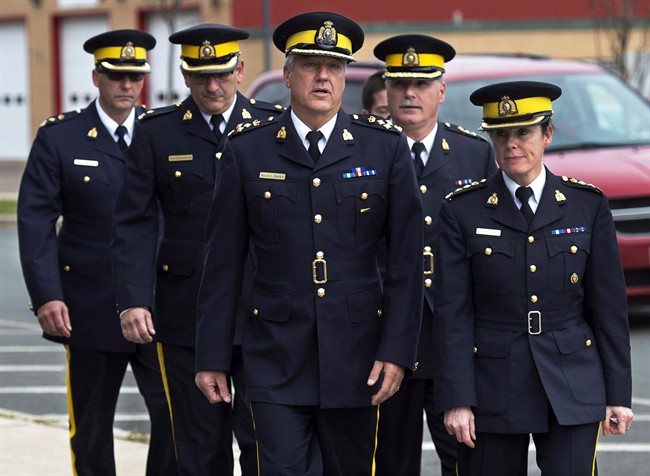Obtaining carbine rifles was a top priority for the RCMP three years before a shooting rampage in Moncton, N.B., but there were a number of elements to consider before front line officers were armed with the high-powered weapons, an inspector has testified at the national police force’s Labour Code trial.

The RCMP is accused of failing to provide members and supervisors with the appropriate information, instruction, equipment and training in an active-shooter event.
Carbine rifles were not available to general duty officers during Justin Bourque’s shooting rampage on June 4, 2014, and Crown witnesses have testified they could have made a difference in the tragedy that killed three Mounties and wounded two others.
READ MORE: RCMP labour trial hears that carbines were a ‘high priority’ for Mounties
Insp. Larry Brookson told Moncton provincial court Wednesday that he started working on the program in December 2011 and that arming front line officers with C8 carbine rifles was a high priority at the time.
“For me, it was priority one,” said Brookson, who worked on the project until June 2013.
He said he was told: “Get it to the front line.”
But Brookson testified there were a number of aspects that needed to be considered in obtaining and deploying the rifles, including a risk assessment that would determine where the first batch of weapons were needed most.
“It took a while, but it’s those boxes that needed to be checked off,” the defence witness told Judge Leslie Jackson.
READ MORE: Mountie tears up as he recalls events of Moncton shooting at RCMP labour trial
Brookson said training procedures and policies had to be developed, and a number of equipment issues also had to be sorted.
For example, the Mountie’s racks in their police cars would not support the carbines, so another rack had to be chosen that could store a carbine or a shotgun. He said the rifles also had to be secure when the officer was away from the vehicle.
“You don’t want a carbine falling into the wrong hands,” said Brookson.
Brookson said the RCMP’s first batch of 375 carbines were delivered to the force in March 2013.
On Tuesday, Deputy Commissioner Kevin Brosseau refused to admit that front line officers who responded to the shooting rampage didn’t have the proper training or equipment to handle the heavy-armed gunman.
Brosseau echoed Brookson – who took over the deputy commissioner role in the carbine project in December 2011 – in saying that arming front line officers with carbines was a high priority for the force.
Constables Fabrice Gevaudan, Dave Ross and Doug Larche were killed, while constables Eric Dubois and Darlene Goguen were wounded when Bourque targeted police officers in hopes of sparking an anti-government rebellion.
Bourque was sentenced to life in prison with no parole eligibility for 75 years after pleading guilty to three counts of first-degree murder and two counts of attempted murder.
- 14-year-olds accused in Halifax homicide appear in court, bail hearing set
- B.C. to ban drug use in all public places in major overhaul of decriminalization
- 2 teens charged with murder in case of 16-year-old killed outside Halifax mall
- Cars torched, explosions heard in suspected arson in Montreal neighbourhood



Comments